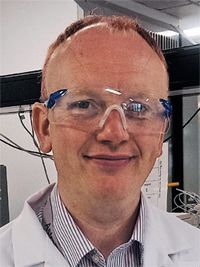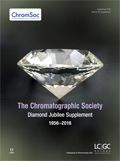ChromSoc: The First 60 Years
Special Issues
An introduction to The Chromatographic Society’s 60th Anniversary supplement.

Paul Ferguson, President, The Chromatographic Society, UK.
An introduction to The Chromatographic Society’s 60th Anniversary supplement.
It gives me great pleasure to be able to introduce this special supplement produced in collaboration with LCGC Europe, which is dedicated to celebrating the 60th (Diamond) anniversary of The Chromatographic Society (ChromSoc). Our Society has its roots in a meeting in London in late May 1956 organized by the late Denis Desty to discuss the rapidly growing field of gas chromatography (GC). For those of you reading this publication and have not heard of us, we are a charitable society run by volunteers dedicated to “supporting chromatography and chromatographers”. We do this in many ways - primarily by holding scientific meetings in the UK but also supporting international chromatography meetings, through awarding our internationally recognized Jubilee and Martin Medals (which you may have seen presented at the HPLC or ISC meetings this year) and awarding travel bursaries to enable students and chromatographers based in industry to attend national and international separation science events.
If you are reading this publication, you are undoubtedly aware of the impact of separation science not just in industry, but its relevance to everyday life and to ensuring the quality of everything that we consume, that we use, and even the quality of the air we breathe. It is the most important branch of analytical chemistry and in itself should be celebrated. Separation science has developed in so many ways over the lifetime of the Society - encompassing liquid chromatography (LC) and its numerous forms, electrophoresis and its variants, supercritical fluid chromatography (SFC), miniaturization, and hyphenation - not only from a practical perspective, but also from a theoretical understanding too.
To help us inform you more about the Society and various aspects of separation science, we are delighted to be collaborating with LCGC Europe in producing this supplement. LCGC is a very important publication in the field of separation science and has a huge readership that seamlessly connects scientists at the bench with the latest in practical and cutting-edge research. We very much hope to work with LCGC, not only on this publication, but also in the future too.
We hope this celebratory magazine containing historical articles, interviews, and technical articles reflects some of the fundamental values of LCGC while also providing you with insight into The Chromatographic Society in a similar format to our 50th golden anniversary booklet, which we produced in 2006 (and may still be viewed on our website at www.chromsoc.com). As we will discuss later, we are also looking for your feedback regarding what you feel are the most important developments in separation science over the last 60 years (we’ll be sharing some of these thoughts in this publication) through a short on-line survey and will share the results early next year.
We would also like to thank the companies who have sponsored this supplement. We are fortunate that the Society has close links with many chromatographic instrument and consumable manufacturers who support our many activities. As you will read in this publication, The Chromatographic Society is at its core a meetings organization. We organize at least four scientific meetings each year in the UK and vendor sponsorship of these meetings is incredibly important in allowing us to hold these events, but also to support our altruistic activities. Their sponsorship of this magazine is as equally important as supporting our events because it provides a platform to showcase our activities and helps us in our goal of supporting chromatographers.
My final thanks go to John Lough of The Chromatographic Society, who has been the driving force for this publication. Without his significant efforts, you would not be reading this today.
As President of The Chromatographic Society, I hope you enjoy this special supplement. We’d be delighted to receive your feedback regarding it, and hopefully it will encourage you to join us, attend our meetings, and help support our activities in the future.
Paul Ferguson is the President of The Chromatographic Society.

Determining the Serum Proteomic Profile in Migraine Patients with LC–MS
April 17th 2025Researchers used liquid chromatography–mass spectrometry (LC–MS) in their proteomic analysis to compare the serum proteome of migraine patients with healthy controls and to identify differentially expressed proteins as potential migraine biomarkers.
Thermodynamic Insights into Organic Solvent Extraction for Chemical Analysis of Medical Devices
April 16th 2025A new study, published by a researcher from Chemical Characterization Solutions in Minnesota, explored a new approach for sample preparation for the chemical characterization of medical devices.














